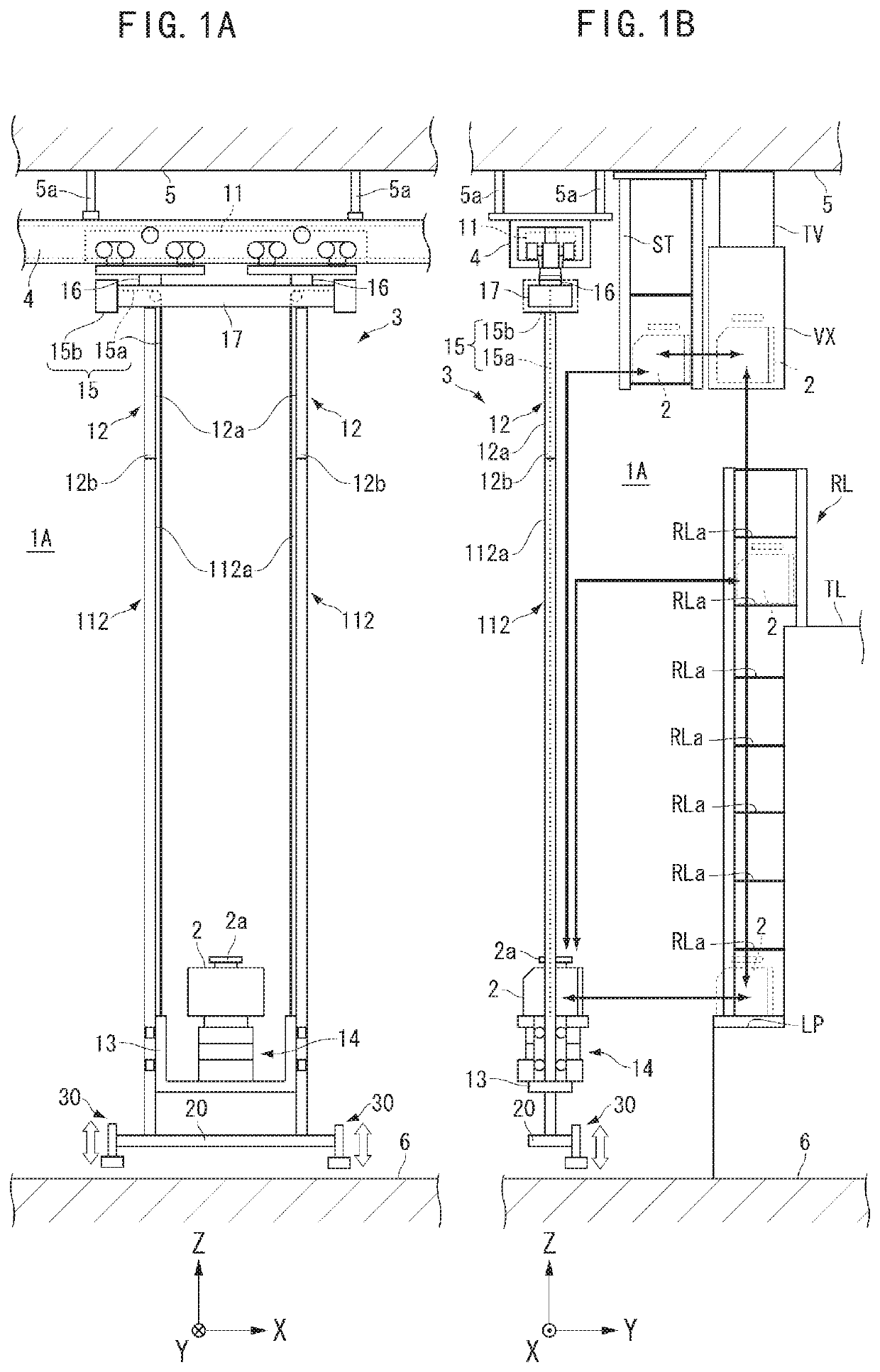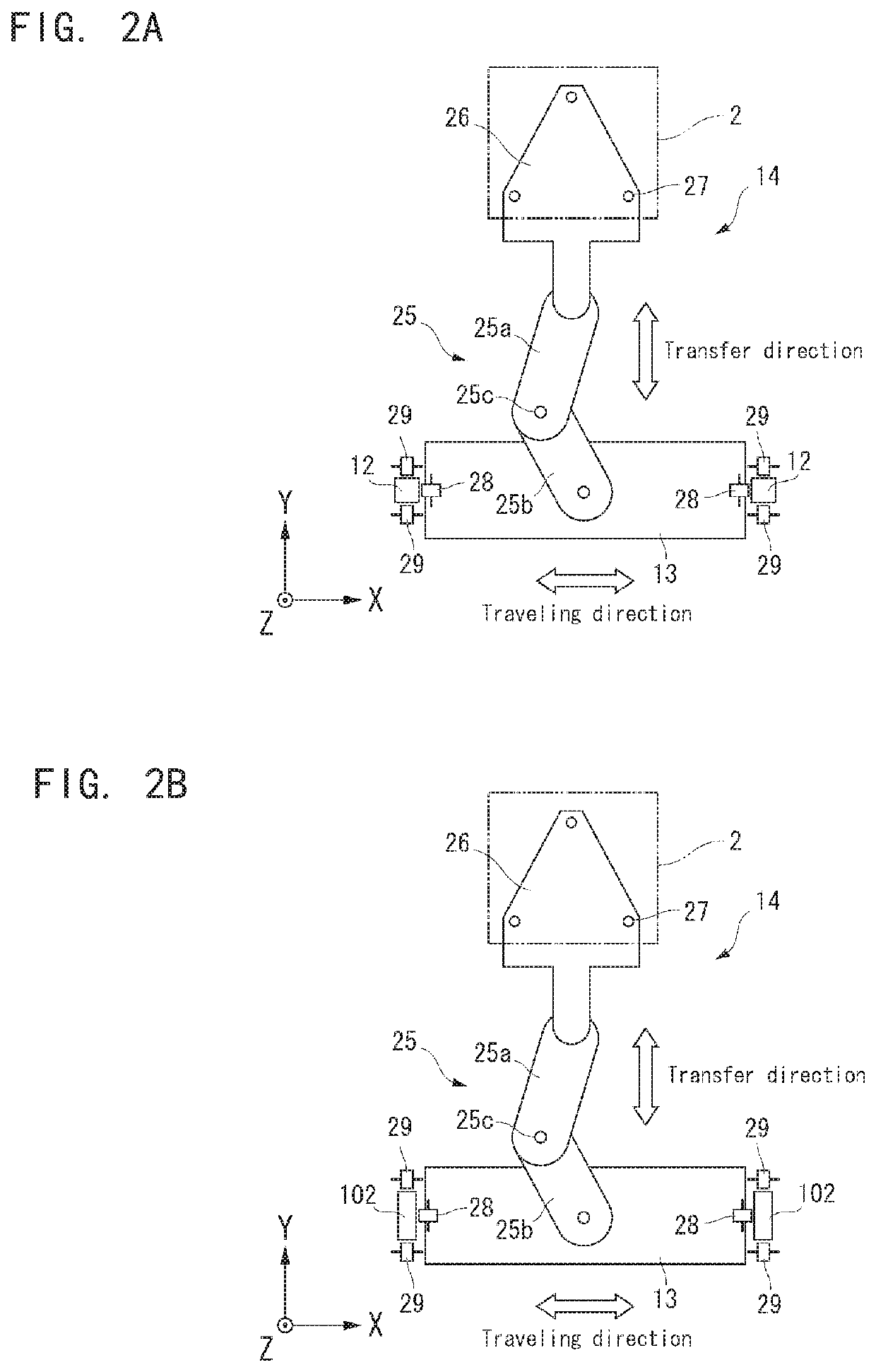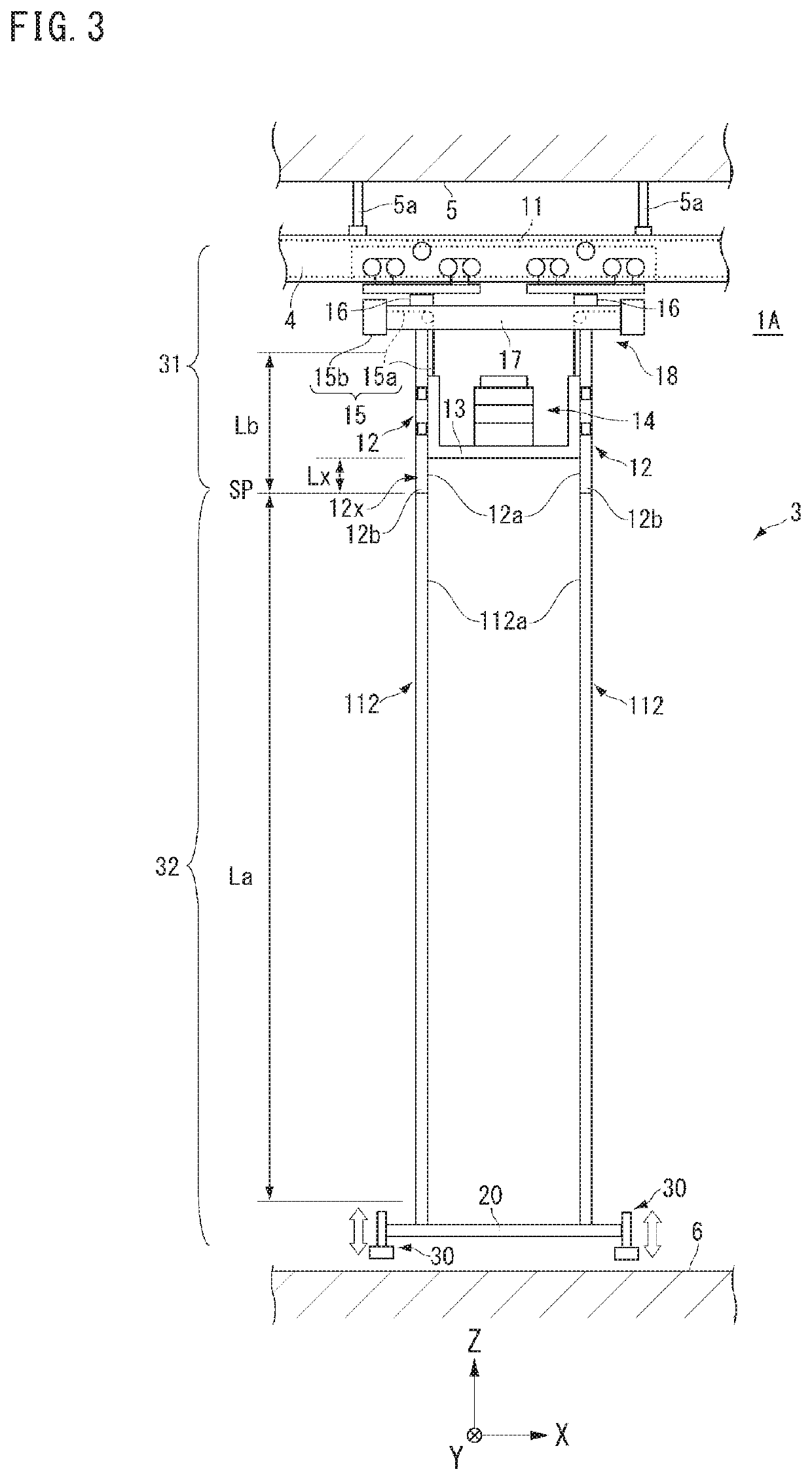Overhead transport vehicle and transport system
a technology for transporting vehicles and transportation systems, applied in the direction of cleaning processes, cleaning processes, lifting devices, etc., can solve the problems of reducing transport efficiency, prolonging the time, and stutter cranes, so as to facilitate the expansion of the ascending/descending range of the elevation platform, avoid interference of the lower portion, and simple operation
- Summary
- Abstract
- Description
- Claims
- Application Information
AI Technical Summary
Benefits of technology
Problems solved by technology
Method used
Image
Examples
first preferred embodiment
[0029]FIGS. 1A and 1B are diagrams showing examples of a transport system to which an overhead transport vehicle related to the present preferred embodiment is applied. A transport system 1A of the present preferred embodiment preferably is installed in a semiconductor device manufacturing factory, for example, and is applied to a system that transports articles 2 such as FOUPs (Front Opening Unified Pods) accommodating semiconductor wafers used for manufacturing semiconductor devices, and reticle pods accommodating processing members such as reticles, for example. Here, the article 2 is described as a FOUP, however, the article 2 need not be a FOUP. Also, the transport system 1A can be applied to a facility of a field other than the semiconductor field, and the articles 2 may be various kinds of articles handled at a facility having the transport system 1A installed therein.
[0030]The transport system 1A includes an overhead transport vehicle 3 and a track 4. In the present preferre...
second preferred embodiment
[0074]Hereunder, a second preferred embodiment of the present invention is described. In the present preferred embodiment, similar members as those described above are assigned with the same symbols and the descriptions thereof are omitted or simplified. FIG. 8 is a diagram showing an example of a transport system 1B to which an overhead transport vehicle related to the present preferred embodiment is applied. FIG. 9 and FIG. 10 are diagrams each showing an operation of the transport system 1B related to the present preferred embodiment.
[0075]The transport system 1B of the present preferred embodiment includes a track 41, lower masts 212 different in length from the lower masts 112 described above, and a support 42. As with the track 4, the track 41 allows the traveling body 11 to travel thereon. The track 41 is provided at a height from the floor surface 6 different from that height of the track 4 and is arranged below the track 4 in FIG. 8. As with the track 4, the track 41 may be...
third preferred embodiment
[0082]A third preferred embodiment of the present invention is described. FIG. 12 is a diagram showing an example of an overhead transport vehicle 3A related to the third preferred embodiment. In the present preferred embodiment, similar members as those described above are assigned with the same symbols and the descriptions thereof are omitted or simplified. As shown in FIG. 12, in the overhead transport vehicle 3A, the upper masts 12 are attached to the upper support body 17 via connectors 18. Each connector 18 is, for example, a hinge, and has a horizontal direction (Y direction) axis center orthogonal to the traveling direction (the X direction) of the traveling body 11. Each connector 18 transmits almost no moment about the axis center thereof when friction is ignored. The traveling body 11 supports the upper masts 12 by the connectors 18 each having a mechanism capable of rotating (freely rotating) about the axis center.
[0083]The connectors 18 each receive a moment about two d...
PUM
 Login to View More
Login to View More Abstract
Description
Claims
Application Information
 Login to View More
Login to View More - R&D
- Intellectual Property
- Life Sciences
- Materials
- Tech Scout
- Unparalleled Data Quality
- Higher Quality Content
- 60% Fewer Hallucinations
Browse by: Latest US Patents, China's latest patents, Technical Efficacy Thesaurus, Application Domain, Technology Topic, Popular Technical Reports.
© 2025 PatSnap. All rights reserved.Legal|Privacy policy|Modern Slavery Act Transparency Statement|Sitemap|About US| Contact US: help@patsnap.com



